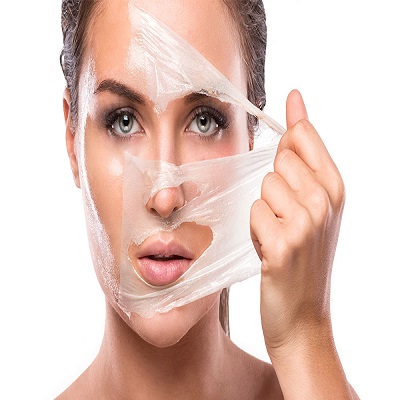Chemical peels are a well-established skin rejuvenation treatment known for their ability to improve skin tone, texture, and clarity. They are widely used to address concerns such as acne, pigmentation, fine lines, enlarged pores, and uneven skin tone. For individuals seeking to maintain healthy and vibrant skin over time, a common question arises: how often can I safely get chemical peels? The answer depends on several factors including the type of peel used, the individual’s skin type, the condition being treated, and professional recommendations. If you’re considering Chemical Peels in Islamabad, understanding safe treatment intervals is crucial for effective and sustainable results.
Types of Chemical Peels and Their Frequencies
Chemical peels are generally categorized based on their depth of penetration into the skin: superficial, medium, and deep. Each type has its own recommended frequency based on its strength and impact on skin regeneration.
1. Superficial Peels (Light Peels)
These peels exfoliate only the outermost layer of the skin (epidermis). Common ingredients include alpha hydroxy acids (AHAs) like glycolic acid and lactic acid, or beta hydroxy acids (BHAs) like salicylic acid.
-
Frequency: Every 2 to 4 weeks
-
Purpose: Maintenance of skin clarity, mild acne control, smoothing texture
-
Downtime: Minimal, usually just mild redness or flaking for 1-2 days
Superficial peels are safe to perform regularly because they involve gentle exfoliation. They are ideal for individuals beginning their skincare journey or those who want to maintain consistent skin brightness.
2. Medium Peels
Medium-depth peels reach the upper layers of the dermis. Trichloroacetic acid (TCA) is a commonly used solution for this category.
-
Frequency: Every 3 to 6 months
-
Purpose: Treating sun damage, hyperpigmentation, melasma, wrinkles
-
Downtime: Moderate, with visible peeling and redness lasting up to a week
Due to their deeper effect, medium peels require more recovery time and should be spaced out to allow the skin to fully heal and regenerate.
3. Deep Peels
Deep peels penetrate further into the dermis and are generally performed using phenol-based solutions.
-
Frequency: Once in a lifetime or only after several years
-
Purpose: Addressing deep wrinkles, precancerous growths, and severe sun damage
-
Downtime: Intense, often 2 to 3 weeks of recovery
Because of their aggressive nature, deep peels are not performed routinely. They are reserved for severe cases and offer long-lasting results.
Factors That Determine the Right Frequency
While guidelines exist for how often each type of peel can be used, individual factors significantly influence treatment intervals.
Skin Type
-
Oily or acne-prone skin: May benefit from more frequent superficial peels
-
Dry or sensitive skin: Requires more time between sessions to avoid irritation
Skin Concerns
-
Hyperpigmentation or melasma: Requires strategic scheduling to avoid worsening pigmentation
-
Aging skin: May benefit from alternating light and medium peels under supervision
Previous Skin Treatments
If the individual has recently undergone treatments like microneedling, laser therapy, or intense topical medication (e.g., retinoids), their skin may need extra time before another chemical peel can be safely performed.
Recovery and Healing
The skin’s ability to recover between treatments is one of the most critical considerations. Over-exfoliation or insufficient healing time can lead to complications such as:
-
Redness
-
Sensitivity
-
Hyperpigmentation or hypopigmentation
-
Compromised skin barrier
Signs You’re Getting Chemical Peels Too Frequently
While chemical peels are safe when administered by qualified professionals, overuse can lead to adverse effects. Some signs that you may be getting peels too often include:
-
Persistent redness and inflammation
-
Dryness and flaking that doesn’t resolve
-
Increased skin sensitivity or burning sensation with products
-
Uneven skin tone or textural changes
These symptoms indicate the skin is not getting adequate time to heal. If any of these signs appear, treatment frequency should be reduced, and recovery support measures implemented.
The Importance of Professional Guidance
Only a licensed dermatologist or medical aesthetician can assess your skin’s condition and determine the safest treatment frequency. They will evaluate key elements such as:
-
Fitzpatrick skin type (to assess pigmentation risks)
-
Lifestyle and sun exposure levels
-
Medical history and current skincare regimen
-
Desired outcomes and tolerance for downtime
Personalized treatment schedules are often the most effective way to achieve desired results while minimizing risks.
Building a Long-Term Skincare Plan
Instead of relying solely on frequent chemical peels, a holistic skincare strategy is recommended. This may include:
-
Daily sun protection: Essential to prevent further damage and preserve peel results
-
Hydrating serums and moisturizers: To support the skin barrier
-
Antioxidant-rich products: Such as Vitamin C, which enhance skin radiance
-
Periodic professional facials: To maintain clarity between peels
By incorporating chemical peels into a broader skincare routine, you can maintain results over the long term without over-relying on any single treatment.
Combining Peels with Other Treatments
In many cases, professionals may alternate chemical peels with other modalities for enhanced results without increasing frequency. Options include:
-
Microneedling: Improves texture and boosts collagen without over-exfoliation
-
Hydrafacial: Offers deep hydration and exfoliation with minimal downtime
-
Laser treatments: Target deeper pigmentation or vascular issues in tandem with peels
The combination approach minimizes overuse of chemical exfoliants while maximizing benefits.
Post-Peel Aftercare Between Sessions
To ensure that skin heals properly and remains healthy between chemical peel sessions, it’s important to:
-
Avoid direct sun exposure and use SPF 30 or higher
-
Apply gentle moisturizers and avoid harsh exfoliants
-
Refrain from using retinoids or acids for at least 3-7 days post-peel (depending on depth)
-
Follow all aftercare instructions provided by your skincare provider
Proper aftercare not only supports skin recovery but also prolongs the benefits of the treatment.
Conclusion
Determining how often you can safely get chemical peels requires a personalized approach based on the type of peel, your skin’s sensitivity, and your overall skincare goals. While superficial peels may be performed monthly, medium peels require more extended intervals, and deep peels are only performed rarely. Overuse can lead to complications, making professional assessment essential.
